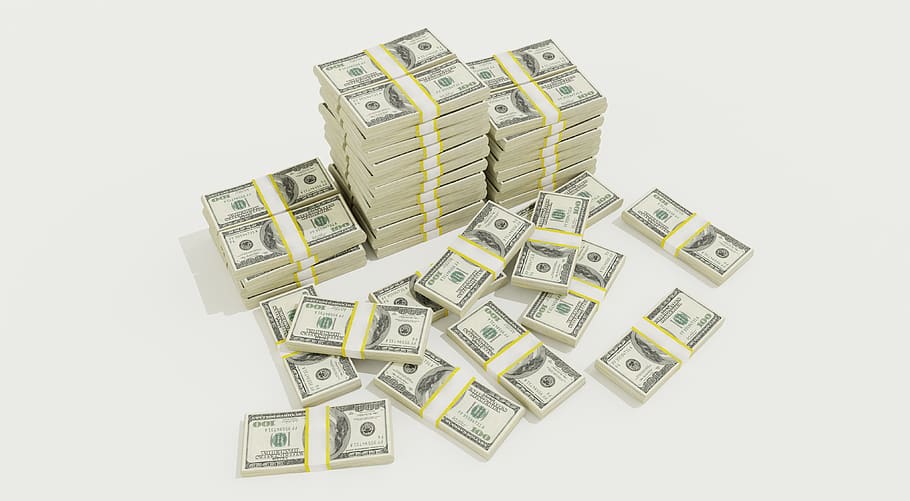Statement Balance and Current Balance Overview and it’s Differences
Statement Balance and Current Balance Overview and it’s Differences

Overview:
For credit cards, they frequently use the terms “statement balance” and “current balance.” These two names can sometimes refer to the same number, but they differ greatly.
If you have a credit card, whether for personal or commercial use, it is critical that you understand some of the major phases and processes involved.
Furthermore, if you’ve ever looked at your credit card bill balance and been astounded by the amount, you can relax. You haven’t gone insane.
Read also: How to transfer money from PayPal to Prepaid debit card
The difference is that your credit card statement balance represents the amount you owed at the end of the previous payment cycle. Your current balance includes any purchases you’ve made in the current billing cycle as well as any pending purchases that haven’t yet been applied to your available credit.
In this article, you’ll learn what a statement balance is, what a current balance is, and how statement balance and current balance compare.
What Is the Definition of Statement Balance?
Each credit card has a billing cycle of about 30 days. (Details about your billing cycle can be found in your cardholder agreement.) The statement balance for a billing cycle summarises all credit and debit transactions on your credit card account.
The statement amount includes any fees, interest, or penalties assessed by the credit card company, as well as any credits granted, in addition to any purchases and payments made during that time period (such as when you return a purchase).
The statement balance is generated on the closing date, which is the last day of the billing cycle.
Also read: Best Investment Banks in Australia
If you don’t want to be charged interest, pay off your statement balance in full every month.
Otherwise, they will carry over to the following month the portion of your statement balance that you do not pay, and interest will accrue.
If you are unable to pay off your account’s debt in full, make at least the minimum payment to avoid late fees and the negative impact on your credit score.
What Exactly Is Current Balance?
The current balance (also referred to as the credit card balance) is the sum of all charges and payments made to your account up to that point in time. It, like the statement balance, includes fees, interest, penalties, and credits, as well as any purchases or payments you’ve made.
If you frequently use your credit card, your current balance will frequently differ from the balance shown on your statement. Why? While your statement balance represents what you owed at a specific point in time, your current balance is updated on a regular basis to reflect what you owe right now.
Assume your March billing cycle ends on March 15th. During that billing period, you made $500 in credit card purchases. The $500 statement balance from those purchases appears on the March 15 billing statement. If you use the same credit card to make a $100 purchase on March 16 and then check your account online, you’ll notice that the $100 transaction is reflected in the current balance, but your statement balance remains unchanged.
The Differences Between Statement Balance and Current Balance
Although your statement balance and current balance may appear to be the same, they are not. A comparison of the two balance numbers is provided below:
Frequency
You can see your current balance whenever you visit your account, whether online, through an app, in person, or over the phone. They update your current balance whenever a charge is applied to your account, which could be multiple times per day or once per month. They calculate your statement balance on a monthly basis and remain constant until the next month’s statement balance is determined. This does not imply that you haven’t changed your balance; rather, it means that the information on your statement was correct at the time it was printed.
Calculation method
The statement balance is calculated differently than the current balance. The statement balance is calculated by adding any applicable interest and fees to your current total balance. Your current balance is the balance from your most recent statement, less any additional charges or payments. Your current balance may include charges for purchases or cash advances, but it does not usually include the interest you will pay on such charges, which will be reported in your next statement balance.
Payment conditions
Payment conditions differ between a statement balance and a current balance. After your bill balance has been determined, they will usually prompt you for your monthly payment. You can make a minimum payment or pay off as much as you want, up to the full amount of your loan. Your current balance does not indicate that you must make a payment right now. If you do not, they will charge and show your interest on your next statement balance.
Advances on cash
Cash advances may appear differently on your statement balance than they do on your current balance because the interest on your advance hasn’t yet been computed and credited to your account. So, if you took a cash advance, your current balance will only show the amount you received, but the interest on that advance will be included in your statement balance. Because some credit cards charge a different interest rate for cash advances than they do for regular purchases, knowing what that rate is can be beneficial.
Interest
They always include an interest charge in a statement balance for any charges that have accrued but have not yet been paid off. They may include interest from previous statements in your current amount, but they will not include interest from additional charges incurred after your last statement. They will calculate the interest when your next statement arrives. One reason is that if you’re close to your credit limit, you may go over when your next statement calculates interest.
If you pay off all previous purchases and interest but make another purchase after your last statement balance, you can avoid paying interest on that purchase by paying it off completely before your next statement balance. If they pay the charge in full before your next statement balance and you have no other debt on your credit card, they will not charge you interest.
Reports on credit
Credit card companies typically report your balance to credit bureaux based on your statement balance, but some do so as well. Contact your credit card company to find out which one they use. This is significant because your credit usage, or how much of your available credit you are currently using, influences your credit status and score. If you want to improve your credit rating, you can pay extra on your credit card before the creditor reports your balance to credit agencies.
Where do you find balance?
Depending on your credit card company, they frequently find your statement balance and current balance in different places. When you log in, some companies design it so that you can quickly access both your online banking and your app. Other credit card companies might prominently display your current balance. On the other hand, they only show your statement balance on your statement. When you make a payment, however, you may see both.
What Causes My Statement Balance to Be Greater Than My Current Balance?
Because your current balance reflects the current amount of all charges and payments to your account, which varies with each transaction, your statement balance is greater than your current balance. If you’ve made a few transactions since your statement closing date, your current balance will be higher than your statement balance (the day when one billing cycle ends and the next begins).Should I pay current balance or statement balance?
If you’ve made a payment and haven’t made any additional transactions since the closing date of your statement, your current balance will most likely be less than your statement amount.
Paying your bill balance in full before or on the due date can save you money on interest charges. Paying off your existing bills in full by the due date, on the other hand, will help you improve your credit utilisation ratio and credit health.
Is it better to pay my statement balance or my current balance?
You should start by paying down your bill balance. If you consistently pay off your statement balance in full by the due date on each billing cycle, you can avoid paying interest on your credit card payment. As a result, you must make every effort to pay off the statement balance for each billing cycle by the due date.
However, if you are unable to pay off your entire credit card statement balance by the due date for a variety of very good reasons, make your minimum payment first.
As a result, you will be charged interest, but making your minimum payment on time will help you avoid late fees and negative points on your credit report.Why is current balance higher than statement balance?
Credit card companies are not required to offer grace periods, but if they do, they must give consumers at least 21 days after mailing or delivering their statement to pay down the balance listed on the statement without incurring any additional interest charges. Check your credit card company’s terms and services to see if anything comparable is available.
Cash advances, for example, are exempt from the “grace period” laws that apply to most purchases. Instead, the moment you take one out, it begins to accrue interest.
If you’ve recently taken out a cash advance on your credit card, we recommend paying it off as soon as possible, regardless of whether you’ve received your bill.
What Impact Do Your Balances Have on Your Credit Score?
Your credit card issuer will report your credit usage to the Consumer Credit Bureaus each month, typically at the end of the billing cycle. While statement balances are typically reported, some issuers may send the current balance instead. You can contact your credit card company to find out which balances are reported and when.
The Credit Bureaus will calculate your credit utilisation rate based on the balances received from your credit card issuer: the percentage of your total available credit that you are using at any given time.
Your credit utilisation rate is one of the most important factors in your credit score, so it can affect your chances of getting approved for new credit cards as well as your ability to get better interest rates and higher credit limits. When you want to finance a large purchase such as a home, RV, or car, or even rent an apartment, your credit score will be checked.
Simply put, the lower the credit utilisation rate, the better, but if you’re wondering what exactly is a low credit utilisation rate, a current balance of less than 30% of your total credit limit is a good benchmark under the FICO Score and VantageScore credit scoring models.Can I spend my current balance?
Few FAQs
Is it possible for my current balance to be less than my statement balance?
Although the statement balance from the previous billing cycle remains the same, your current balance includes any additional purchases or payments you’ve made since the previous closing date. In this case, your current balance may be less than the balance on your statement.
Is the statement balance included in the current balance?
A billing cycle is the period of time between the close of your previous statement and the next, which is typically 28 to 31 days. The total amount you owe on your credit card right now, including your previous statement balance and any subsequent charges, is your current balance.Can I pay more than my current balance?
What Does the Last Statement Balance Indicate?
According to your most recent statement balance, you must begin making payments or create a repayment plan right away to repay what you have spent. At this point, you will be required to make minimum payments on your statement debt.
Conclusion
It all comes down to choice and financial goals when deciding whether to pay your credit card statement balance or current debt each month.
With either option, you will avoid the interest costs associated with simply making minimum payments on your credit card transactions.
You’ll also reduce your credit utilisation ratio, which may improve your credit health. On-time payment consistency is critical, as your payment history has a significant influence on your credit scores.



